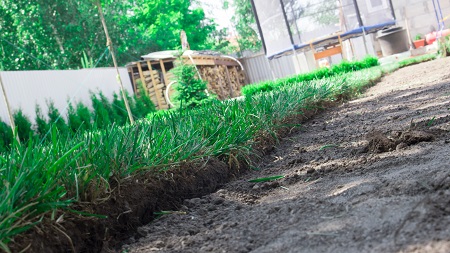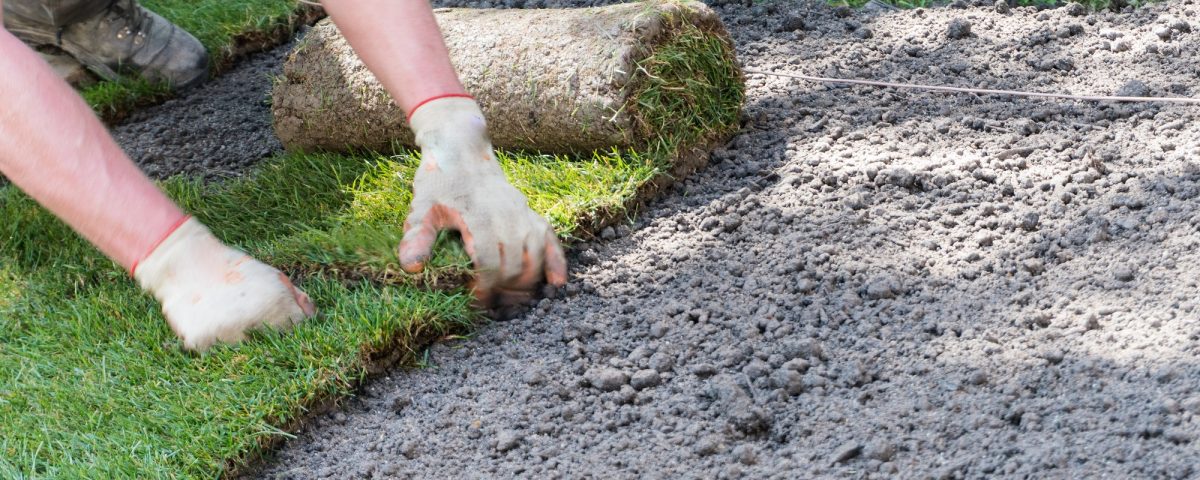
Our Clients:

Understanding the Care of Sod Lawns

Solutions to Winter Lawn Problems
December 21, 2022
The Role of Hydroseeding in Commercial Landscaping
March 19, 2024Remember when you saw that flawless, lush sod lawn at the local park and thought, ‘I want that for my yard/business’? Well, achieving and maintaining such an enviable greenscape requires a solid understanding of the requirements of sod lawns.
It’s not just about installing the sod and watering it regularly; you’ve got to factor in the quality of your soil, the climate of your area, and the type of care you provide post-installation. Now, you might be wondering, ‘How do all these elements influence my sod lawn’s lifespan?’
Don’t worry; we’re about to explore these factors in detail, equipping you with the knowledge necessary to give your lawn the longest, healthiest life possible.
Preparation for Sod Lawn Installation

Properly preparing your soil for sod installation is the first crucial step to ensure the success of your sod lawn. Begin by leveling your soil and removing any debris. This provides a firm bed for your new sod and helps prevent future problems.
Incorporate weed control measures if desired, making sure whatever you do will be compatible with new sod installations. Add a good sand based topsoil and apply a fertilizer suitable for your type of grass. This enhances the performance and lifespan of your sod lawn and ensures your grass has the nutrients it needs to thrive.
Extending the Lifespan of Your Sod
To extend the lifespan of your sod, it’s essential to focus on not just proper installation but also ongoing care and maintenance. The sod is perishable and must be installed the same day you receive it. Upon installation, water the sod until it is squishy wet and make sure it has constant moisture for the next several weeks. The sod starts with no roots and you will be basically growing it hydroponically.
Soil Quality
Soil quality plays a pivotal role in determining the sod lifespan. A sandy, well-prepared soil is essential when planting new grass, ensuring a thriving, green lawn. The process begins even before the sod arrives, with the new soil being tilled if necessary and rolled with a water roller for even compression. This rolling helps avoid uneven settling and avoids dips and crowns in the future.
Sods Basic Needs
- Watering Frequency: The first several weeks after installation are the most crucial for sod longevity. Water the sod immediately after installation. The sod should be kept consistently moist, watering it at least 2-3 times a day for the first month. After this initial period, reduce watering to once every 2-3 days. After one season, the sod should be watered just once a week with a deep soaking (1” of water).
- Mowing Requirements: Mow your new sod when it needs it. When you do mow, be sure not to remove more than 1/3 of the grass blade. Be careful not to open any seems during the mowing process. This allows the grass to grow strong roots without being stressed by excessive cutting.
- Fertility: Fertilize the lawn 4-6 weeks after installation. The sod already has a certain amount of fertilizer in it from the sod farm, so over-fertilizing can burn the grass. Use 16-16-16 at 7#/1000sf during the first season of the new sod.
- Foot Traffic: Minimize foot traffic on the new sod for the first 3 weeks to allow the roots to properly establish.
- Sunlight: Sod needs at least 4-6 hours of sunlight per day, so make sure it’s installed in an area where it can receive adequate light.
- Soil Preparation: Before installation, ensure that the soil is properly prepared. It should be loose and free of stones. Applying 50# of Dolopril lime/1000 sf at least once per year is recommended to maintain proper PH.
- Pest and Weed Control: Keep an eye out for any pests or weeds and take action at the first sign of trouble. Some sod varieties are more resistant to pests and weeds than others.
- Aeration: Aerate the sod once a year, typically in the fall, to prevent soil compaction and promote deep root growth.
- Temperature: Sod can be installed at almost any time of the year, but the optimal time is when temperatures are moderate (spring or early fall), and there is more natural rainfall.
Following these steps will ensure the longevity of the sod, keeping it lush and healthy for years to come.
As a local sod and hydroseeding company, we understand the Pacific Northwest climate and offer sod with three seed varieties, making it ideal for Western Washington. Visit our Web-Site CountryGreen.com for further guidance in maintaining your lawn, ensuring it remains vibrant and healthy.
Professional landscaping supplies we provide:
- Sod
- Sod Delivery Services
- Hydroseeding Services
- Lawn Seed
- Fertilizer
- And various lawn care products










